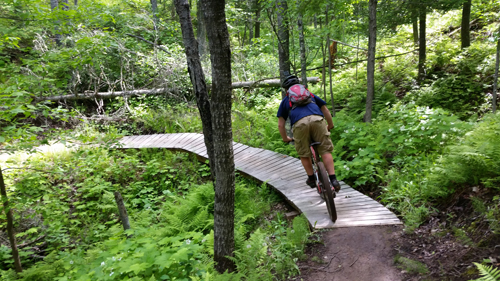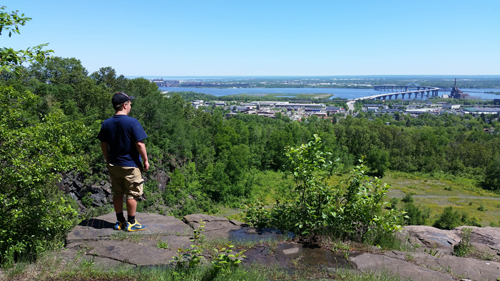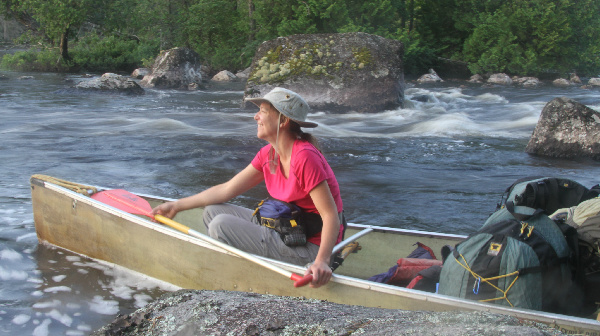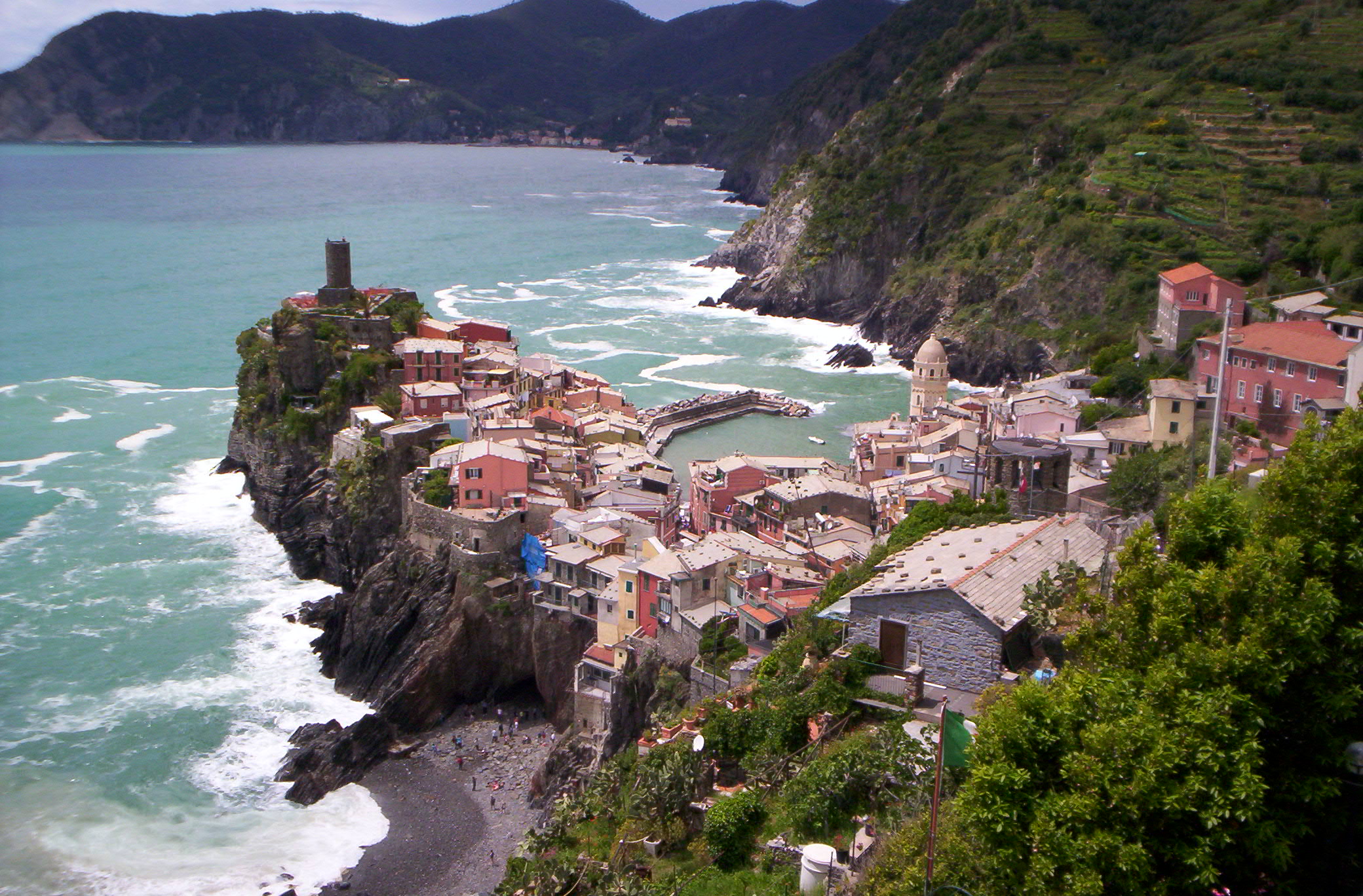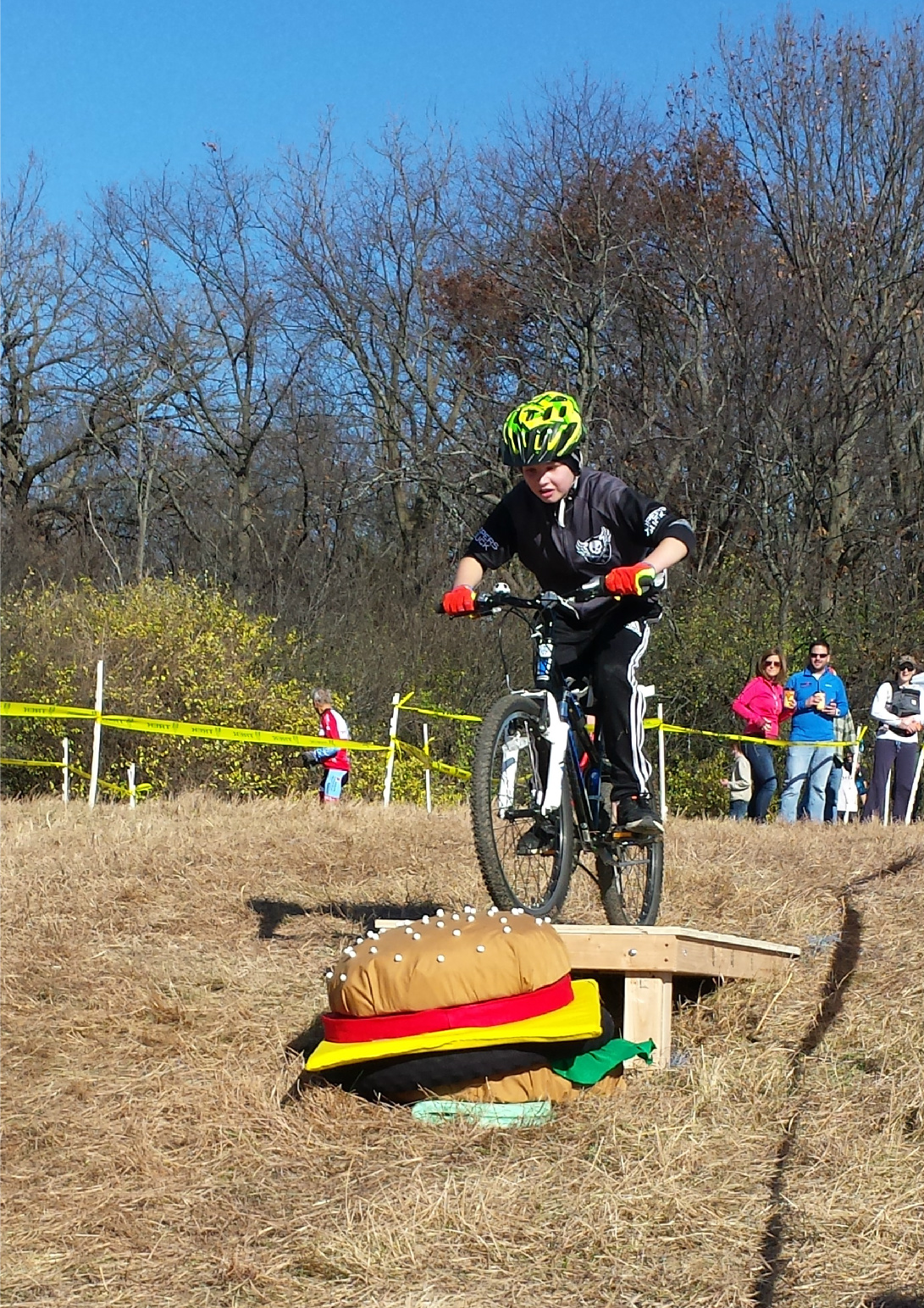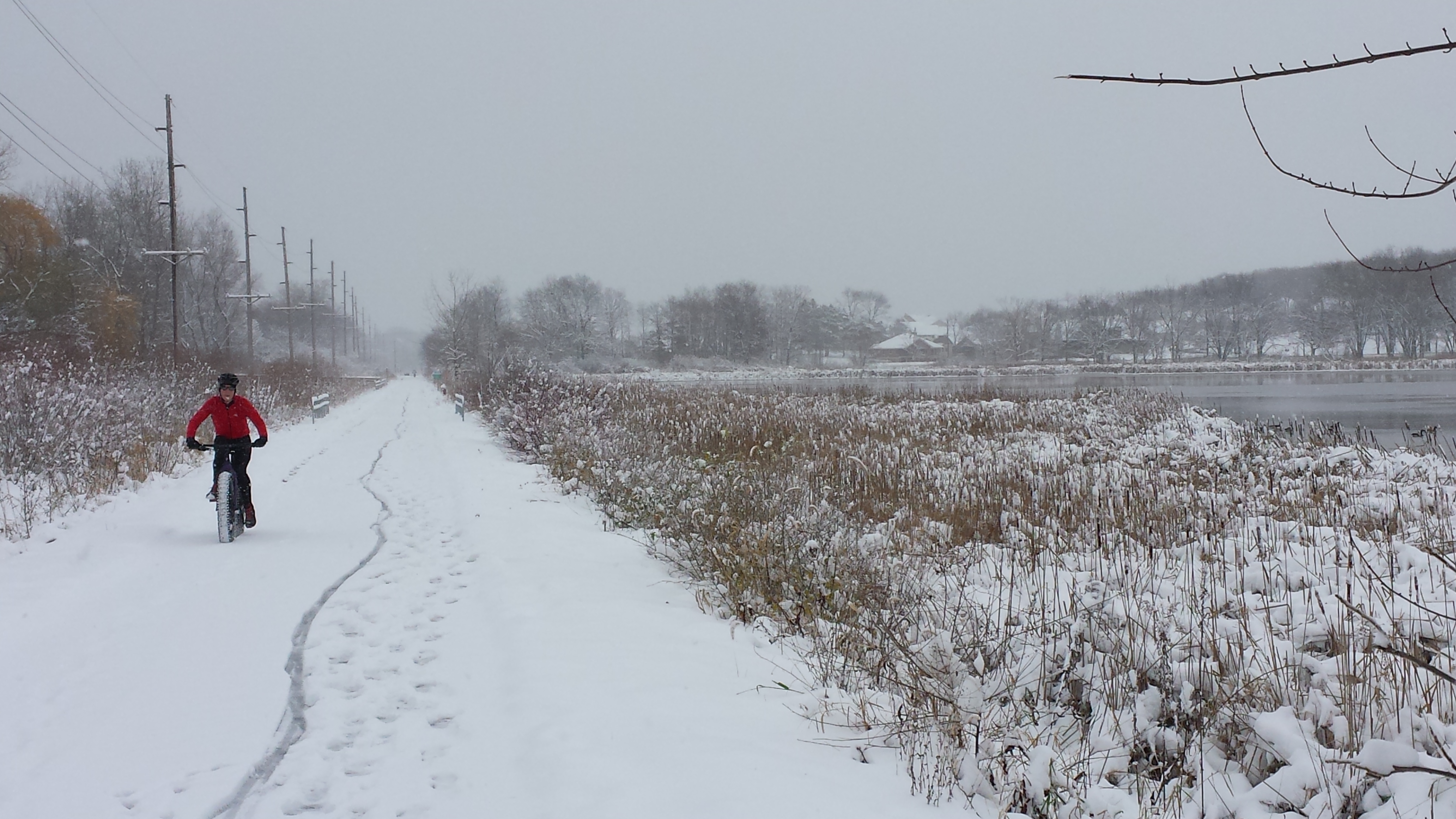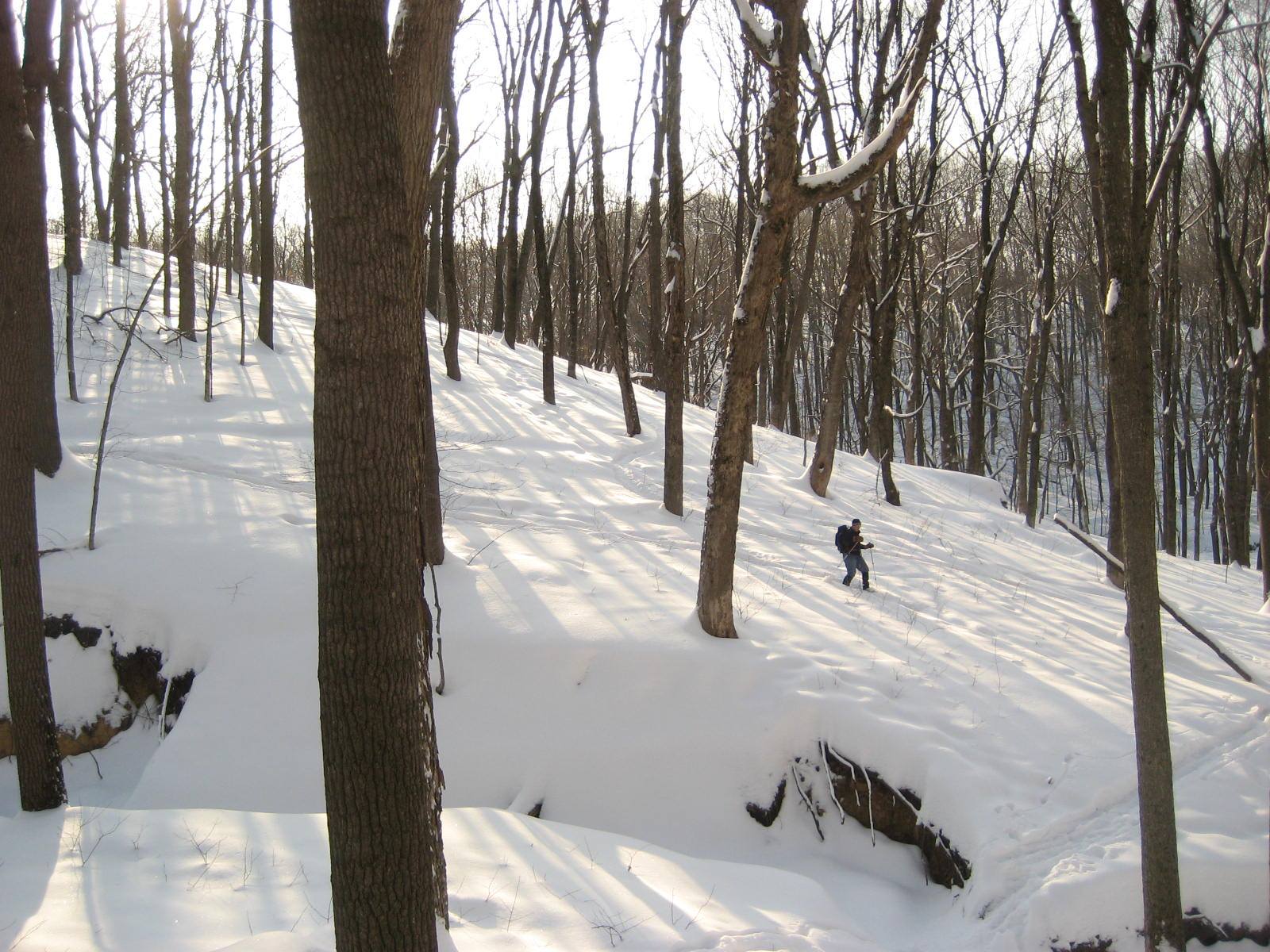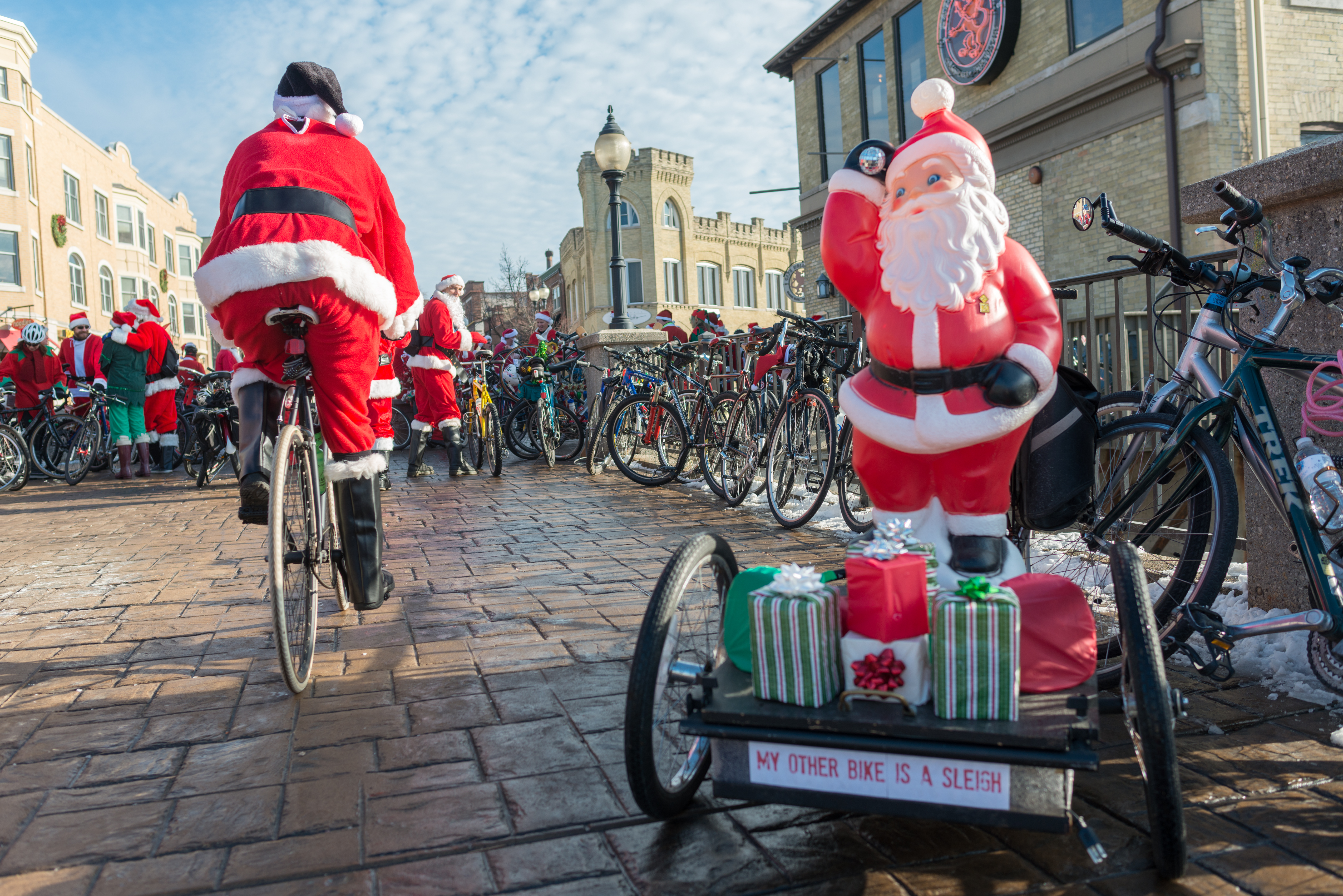The Duluth Destination + Cuyuna and Cable

By Chris Schotz
I can see why many consider Duluth to be the best town in America, but I’d beg to differ on Grandma’s Marathon weekend when it feels like a major city. Throngs of tourists aside, Duluth is a silent sports metropolis re-built with the goal of becoming a destination worth buying a plane ticket to explore. Big-city flair gives way to solitude with the turn of a pedal or stroke of a paddle on the vast network of silent trails woven into the city limits. I gave myself five days to play tourist and take in the Duluth region by mountain bike from Cuyuna Lakes across town to CAMBA in northern Wisconsin.
The marquee feature of this urban trail network is the Duluth Traverse, a 100-mile single track under construction along the prestigious ridges from one end of this elongated city to the other. This ambitious idea did not become a reality by accident, but by the confluence of geology, history and human vision. A 19th-century steel boom brought expectations that one day Duluth would rival Chicago in size so the city was endowed with abundant land for future growth. A plateau in population left the City of Duluth with surplus land high above Lake Superior. It is from these vistas that the notion of the Traverse was born not quite ten years ago.
The mountain bike community arranged a meeting to propose this audacious undertaking to Don Ness, the newly elected mayor. It wasn’t long before the popular mayor was thinking steps ahead toward the creation of the best trail town on the continent. Ness was able to tap into hundreds of thousands of dollars of public funding sources, and COGGS, the local riders organization, was able to leverage this momentum into several well-organized fundraising campaigns and financial awards. The Traverse would not be built by a bunch of guys wielding picks and shovels alone. All that muscle can be put to better use because as one member once told me, money can build trails. This is what happens when mountain biking meets urban planning, a process complete with a formal bidding process to construct trails surveyed and constructed by paid professionals in addition to an excavator-equipped local team. Instead of seeing mountain bikers as something to be merely tolerated, trail culture has been woven into city government as a vital asset to the community’s future.
To date the Traverse has 65 miles of finished trail and has projects underway to reach the 85-mile mark by the end of this year. COGGS expects mileage to pass 90 miles in 2017 and plans to reach the century mark in 2018 once the final sticky access issues are resolved. The Traverse itself will be rated as an easy mountain bike trail on the Duluth difficulty scale, but riders should keep in mind that the Duluth rating system tends to underestimate the challenge of their trails compared to other locations. This trail is masterfully-built over rocky terrain and steep topography so it offers a challenge approachable by all riders with functioning brakes and the patience to ride within their abilities.
The system originates within sight of Jay Cooke State Park, best known for strenuous hiking and serious whitewater on the St. Louis River. The Traverse embarks high above the opposite shore in the rapidly expanding Mission Creek area, renowned for landscaped berms and beautiful views from the hardwoods to the rapids below. A double track will connect Mission Creek to the only lift accessible mountain biking in the Midwest, Spirit Mountain. Here, the city has developed a second chalet at the base of the slope where riders can take the chair to the top, when open on weekends. A lift ticket is almost essential to a proper Spirit Mountain ride where virtually all trails run one-way downhill. I’ve tried to car shuttle or pedal back to the top and found it’s best to consult the schedule and treat yourself when the lifts are running. All runs include a long descent off the Canadian Shield, but they do vary in difficulty from intermediate slalom runs to expert boulder fields with drop-offs and dirt jumps. The jump-filled runs near the bottom offer their own progression, so any mountain biker with a fair amount of experience will find a suitable challenge. Riders should be mindful that they will grow more and more daring over a fun day at Spirit.
Further east, the Traverse connects to the Brewer-Piedmont system where machine-built trail connects to the last of the endangered old-school singletrack. Piedmont is the home of exposed bedrock and advanced terrain that can puzzle a rider with the courage to unravel the obstacles. From the manicured switchbacks to the views of the lake, the Enger Park trails can make a contemplative rider feel like a miniature creature wandering the Zen garden at Enger Tower. East of UM-D, riders can ease into the Duluth experience in Hartley Park where old-school trail has been rebuilt into a system that flows for riders of all abilities. Hawk Ridge Nature Reserve offers a pleasant ride with spectacular views of Lake Superior from an urban wilderness, and finally Lester Park brings a rider to rocky twists and waterfalls at the end of their traverse.
Duluth has long been in love with its green spaces or they wouldn’t have built Skyline Parkway and the Superior Hiking Trail that meanders through town from west to east and top to bottom on the way up the North Shore to Canada. This is the city that insisted that I-35 go under Leif Erickson Park instead of through it. It’s a town with 80K of Nordic trails within the city limits, including a newly-lit 3K loop at Spirit Mountain that will take advantage of artificial snow in November. Paddlers will find launches and waypoints mapped up the St. Louis Valley, where a canoeist will quickly forget they are in a big city as they explore secret bays and oxbows that remind some of fjords.
Duluth can also make your risk-averse town look like a sissy. This town drives like San Francisco and gets fit like Boulder. City attorneys know their population will do it anyway, so they might as well mark the surf spots and bouldering locations, including a re-purposed quarry loved by ice climbers. You can no longer take the historic ski jump at Chester Bowl, but you can take your dog ski-jouring on two designated trails. Or run Class III rapids on the St. Louis, or rent an SUP on the largest lake in the world. Duluth is fashioned for silent sports adventure of every mode and mood.
Though still in touch with its roots as the zenith city of Great Lakes shipping, Duluth has become a sustainable 21st-century city, so after riding some sustainable trails it’s time to eat some sustainable food. Imagine a town where the Bent Paddle Brewing Co. buys grain from the local gardener and then passes the spent mash to the pastured pig farmer, who sells the premium pork to the chefs at Beaner’s Central Coffeehouse, who prepare locavore cuisine to accompany the original brew. Let’s not spoil our appetites with an account of how manure completes the cycle, but be assured that the byproduct is as satisfying to the conscience as it is to the palate. Bent Paddle is a major donor to the trail system, as is Loll Designs, which makes its taphandles from recycled milk jugs. Duluth Grill recycled an iconic old establishment into a delicious source for humanely-raised meat, while Lake Avenue Restaurant has transformed a Canal Park mattress factory into the home of the classiest locally-sourced dining in town. Elegant evenings aside, the most savory sustainable treat I found in Duluth had to be the Thunder Cookies from the Positively 3rd Street Bakery. I thought I’d eaten every cookie that modern science could engineer and never thought that the best cookie ever would be the organic one. And though locals know it by many names, (At Sara’s Table/)Chester Creek Café is not afraid to name the source of all of its local ingredients. In just a handful of years, the momentum of these local farmers and chefs has grown to critical mass. Clearly Duluth is evolving to sustain itself and loves how it tastes.
Sliding down the line
If you’re going to haul your ride all the way to Gold-level Duluth, you might as well take in more of the region that has made Duluth the nationally-recognized destination that it is. IMBA’s Silver-level ride center at Cuyuna Lakes is within striking distance ninety miles west. This 30-mile system was carved out of mountains of mine tailings in 2010 and immediately grabbed the attention of riders looking for purpose-built trails. Springs have filled the abandoned pits to a depth of 500 feet, and birch have reclaimed the high ground so you’d never know that the unique Cuyuna terrain was a human creation until you realize your tires are turning a rusty red.
Cuyuna’s gravel is the most weather-resistant singletrack in the Midwest, and its green-level trails are the perfect place for new riders to experience some flow without any distracting bumps or climbing. More difficult trails introduce some stone and more elevation towards the astounding views of the 15 lakes that are a treat to paddle. Divers tell tales of flooded mine shafts and terraced roads travelled by trout into the abyss. Riders’ highlights include the chain of berms that concludes the Bobsled trail and Screamer, the 15-second thrill ride labeled a double diamond for extreme difficulty. Though it’s wise to proceed with caution at first, the rating system at Cuyuna does over-rate the difficulty of trails in comparison to Duluth. Cuyuna Lakes is the best place to get a new rider hooked on mountain biking without feeling like they’re gonna die.
In just a handful of years, the quiet town of Crosby has embraced these two-wheelers driving up from the Cities. Two campgrounds are located a stone’s throw from the trails, and plans are in the works for the Cuyuna Brewing Co. to start serving this fall. Cycle Path & Paddle can rent a watercraft to anyone wishing to stare down the Huntington mine shaft or navigate the channels and portages that connect a fantastic assortment of natural and mine lakes. Fat bike groomers prepare 25 miles of trail for winter, including the Cuyuna Lakes State Trail that may some day connect to the 115-mile Paul Bunyan Trail. The Cuyuna crew is driving to stretch their singletrack network to 75 miles, with a skills park, pump track, double-diamond downhill, and Cuyuna city connecting loop in the works.
Over to Wisco
After tasting gold and silver, the Bronze-level CAMBA rides just an hour into Wisconsin make a perfect day-trip dessert. I ended my excursion with the perfect way to sample it all in one big gulp – the Chequamegon 100, an event that illustrates just how far mountain biking has evolved in thirty years. I first saw the Chequamegon from the seat of my rigid steel Rockhopper in 1987 when the Short and Fat started in downtown Cable and ended at Lakewoods Resort. That $400 bike was all I needed for the fire roads and Birkie trails that we were so stoked to ride back then, but thirty years have turned that world on its head. The 2016 Chequamegon 100 started at Lakewoods and ended at the pizza counter for Rivers Eatery in Cable, but thankfully a lot more than grassy ski trails and gravel were found in between.
If my Rockhopper was still in one piece today, it would discover that the 90 miles of CAMBA singletrack have a few too many rocks for it to hop. CAMBA now has the widest variety of trails of every generation. Defy gravity on the next generation berms of the Flow Mama Trail or defy death on the Wall Street Drop in the rough old-school Rock Lake Trail, which is there in all its namesake glory once that machine-built flow trail starts to all feel the same. CAMBA offers an expansive menu of trail clusters, so I’d recommend the OO trailhead near Seeley as the perfect entrée for your CAMBA visit.
CAMBA trails are evolving every summer as volunteer and professional crews work to expand and improve the system. Old trails will be upgraded while maintaining their traditional challenge as new flow trail is machined out of the hills for those who love to carry speed. Major expansion efforts will focus on the roller coaster rides of Mount Ashwabay just up the hill from the Apostle Islands. Trail enhancement takes hard work and money, much of which is raised through events like the Chequamegon 100. Riding the 100 in metric or miles is the closest thing to riding with a guide from one cluster to the next. Thanks to Angry Catfish Bicycle + Coffee Bar, the Advocate Cycles’ promoters are able to donate all of the entry fees right back to the trails, and this Sept. 10th they plan to do the same for Duluth when the Gitchee Gumee Traverse guides riders for 60 miles across town without having to consult a map.
Scenic overlook
Was five days enough to see every trail in Duluth, Cuyuna and CAMBA? Could someone visit each of the dozen craft breweries and distilleries along the way? Yes, it is logistically possible, if all you do is ride and drink beer. A Duluth brewery tour is a safe head start with stops at COGGS supporter Thirsty Pagan Brewing and the award-winning Vikre Distillery, where local ingredients lend a Boundary Waters flavor. But it’s important to stop and take a breath too. Dip a paddle. Enjoy the view. Duluth will be there next year with new trails and local flavors. This is the silent sports metropolis that just gave 72% of the vote to a trail runner when Mayor Don Ness moved on. Its commitment to trails is not changing any time soon. This is the destination for every year.


